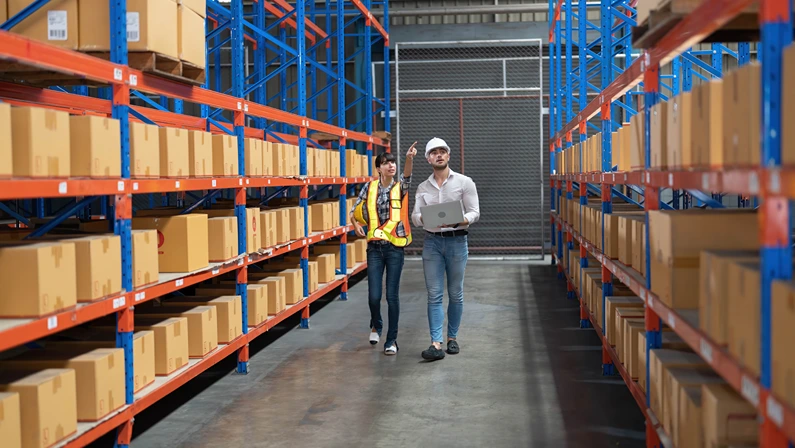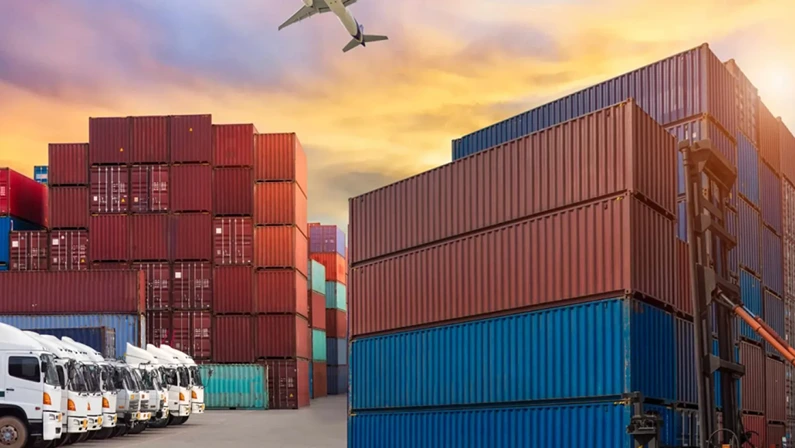Supply chain issues can feel like a never-ending headache. From unexpected delays to rising costs, it seems like there’s always something threatening to derail your operations.
That’s why having a resilient logistics strategy isn’t just a nice-to-have anymore—it’s a must.
In this article, we’ll chat about simple, effective ways to spot risks, stay prepared, and keep your supply chain running smoothly, no matter what comes your way.
Importance of Mitigating Supply Chain Risk to Maintain Business Continuity
In an unpredictable world, supply chain risk mitigation is critical to ensuring uninterrupted business operations. Delays, shortages, or disruptions can lead to lost revenue, unhappy customers, and long-term reputational damage.
By proactively identifying and managing risks, businesses can safeguard their operations, adapt to unexpected challenges, and maintain a competitive edge. A strong focus on risk mitigation not only keeps the supply chain moving but also helps build trust and supply chain resilience in an ever-changing marketplace.
Understanding Supply Chain Risk

Supply chain risk encompasses any event or factor that can disrupt the flow of goods, services, or information across the supply chain. These risks can stem from various sources, including operational inefficiencies, supplier instability, global events, or emerging technologies.
Supply Chain Risk and Its Potential Impact on Businesses
Supply chain risks can disrupt operations and significantly impact a business’s bottom line. From operational hiccups to cybersecurity threats, each risk type presents unique challenges. Knowing these risks and their potential consequences is the first step toward creating a resilient logistics strategy.
Below are the different types of supply chain risks and their impacts.
Operational Risks
Operational risks arise from inefficiencies or failures in day-to-day supply chain activities, such as production delays, inventory shortages, or transportation disruptions. These risks can lead to missed deadlines and dissatisfied customers.
Strategic Risks
Strategic risks occur when long-term decisions, like outsourcing or relying heavily on a single supplier, backfire. A misstep here can compromise supply chain flexibility and adaptability.
Financial Risks
Financial risks involve sudden changes in costs, such as raw material price hikes, currency fluctuations, or supplier bankruptcies, all of which can erode profit margins and strain budgets.
Environmental Risks
Environmental risks include natural disasters, extreme weather events, or climate-related regulations that disrupt operations or affect the availability of resources.
Cybersecurity Risks
Cybersecurity risks are a growing concern. A cyberattack on supply chain systems can compromise sensitive data, disrupt operations, and damage trust with customers and partners.
Key Strategies for Mitigating Supply Chain Risk
To effectively manage supply chain risks, businesses must implement strategies that enhance flexibility, reliability, and responsiveness.
Mitigating risks isn’t about eliminating them entirely but about building a supply chain that can absorb shocks and adapt to changing circumstances.
Here are the key strategies that can help you reduce vulnerability and strengthen your logistics framework, ensuring your business stays resilient no matter what challenges arise.
Supplier Diversification
Relying on a single supplier can expose your business to significant risks. Diversifying your supplier base ensures that if one supplier faces issues, you can quickly pivot to others.
This strategy spreads the risk and helps maintain a steady flow of goods, preventing bottlenecks that could slow down your entire operation.
Building Strong Supplier Relationships
A strong, collaborative relationship with your suppliers can be a game-changer during a crisis. When there is nurturing of open communication, transparency, and trust, you’ll be better positioned to address potential risks together. Suppliers who understand your needs and are aligned with your goals will be more likely to work with you during disruption.
Inventory Buffering
Inventory buffering involves maintaining an extra stock of critical items to cover unexpected shortages or delays. This strategy provides a safety net during supply chain disruption, helping you maintain operations even when suppliers can’t deliver on time. However, it’s important to balance buffering with the cost of storage and inventory management.
Flexible Contracts
In uncertain times, flexibility is key. Having flexible supply chain contracts allows you to quickly adapt to changes in demand, prices, or supply availability. These contracts might include clauses that let you adjust delivery schedules, renegotiate prices, or change quantities without heavy penalties, ensuring you’re not locked into unfavorable terms.
Technology Adoption
Leveraging supply chain technology is one of the most effective ways to mitigate risks. Tools like supply chain management software, real-time tracking, and predictive analytics can provide insights into potential disruptions and help you make informed decisions. Technology also improves visibility, allowing you to respond quickly and reduce delays.
Geographical Diversification
Geographical diversification spreads your risk by sourcing materials and products from multiple regions. This strategy helps minimize the impact of regional disruptions, such as natural disasters or political instability, and ensures you can access alternative suppliers when necessary.
Building a Collaborative Network
Collaboration with other businesses in your supply chain—such as logistics providers, distributors, and competitors—can create a more resilient network. Sharing information, resources, and best practices can help you identify risks early and respond collectively.
A collaborative network fosters mutual support during disruptions and strengthens the entire supply chain’s ability to bounce back.
Developing a Resilient Logistics Strategy

Having a resilient logistics strategy is essential for navigating today’s unpredictable supply chain landscape. It’s about creating a framework that allows your business to quickly recover from disruptions and maintain smooth operations even in challenging times. This requires a proactive approach that includes logistics risk assessment, planning, technology integration, and more.
Below are the critical steps needed to develop a logistics strategy that not only mitigates risks but also supports long-term sustainability.
Risk Assessment and Identification
Before you can mitigate risks, you need to identify them. Conducting regular risk assessments will help you pinpoint potential threats across your supply chain—from natural disasters to supplier insolvencies. By recognizing these risks early, you can prioritize them and put mitigation plans in place. A thorough risk assessment serves as the foundation of a resilient logistics strategy.
Contingency Planning
Having a contingency plan in place is a cornerstone of resilience. This involves creating alternative processes and solutions for critical supply chain activities in case something goes wrong. Whether it’s a backup supplier, alternative shipping routes, or emergency inventory plans, a well-crafted contingency plan ensures that you’re prepared to handle disruptions without missing a beat.
Data-Driven Decision Making
In the age of big data, making decisions based on data rather than assumptions is a powerful strategy. Analyzing data from various sources, such as historical performance, market trends, and supplier reliability, enables you to forecast risks and trends. Data-driven decision-making allows you to avoid potential problems and make smarter, more informed choices.
Technology Integration
Integrating the latest technology is a game-changer for logistics. Tools like supply chain management software, IoT-enabled sensors, and AI-powered analytics offer real-time insights and predictive capabilities that improve operational efficiency and risk management. Technology helps streamline processes, increases visibility, and empowers businesses to respond to challenges quickly and effectively.
Agility and Flexibility
A resilient logistics strategy is one that is adaptable to change. Building agility and flexibility into your supply chain means you can quickly adjust to new conditions, whether it’s shifting customer demand, unexpected supplier delays, or global disruptions. By being open to change and continuously optimizing operations, you can minimize downtime and keep things running smoothly.
Supply Chain Mapping
Supply chain mapping provides a clear visualization of your entire supply chain, including suppliers, transportation routes, and key touchpoints. By mapping out your supply chain, you can identify potential vulnerabilities and plan for possible disruptions. It also helps you better understand your dependencies, enabling you to create more effective contingency plans and streamline operations.
Resilient Infrastructure
A strong, flexible infrastructure is essential to supporting your logistics operations. This includes everything from warehouses and distribution centers to transportation networks and IT systems. Investing in infrastructure that can withstand disruptions—such as climate events or unexpected surges in demand—ensures that your logistics network can remain operational and efficient in any situation.
The Role of Collaboration in Building Resilience
Collaboration plays a crucial role in creating a resilient logistics strategy. Whether it’s working internally with your team or externally with suppliers and partners, collaboration helps to streamline processes, share valuable insights, and respond more effectively to disruptions.
By fostering a culture of collaboration, businesses can strengthen their supply chain and ensure they’re better equipped to handle unexpected challenges. Let’s explore the two key areas where collaboration can make a big difference in building resilience.
Internal Collaboration
Internal collaboration within your organization is essential for aligning goals and strategies across departments. Teams from procurement, operations, logistics, and finance must work together to identify risks, share information, and create a unified approach to managing supply chain challenges.
By breaking down silos and fostering open communication, businesses can respond more quickly and effectively to disruptions, ensuring that all parts of the organization are working toward the same objective.
External Collaboration
External collaboration extends beyond your company’s walls and includes partnerships with suppliers, logistics providers, distributors, and even competitors. Building strong relationships with these external partners allows for better coordination and a quicker response to disruptions.
Sharing resources, data, and best practices can help create a more flexible and adaptive supply chain, and working together can lead to mutually beneficial solutions during crises. External collaboration also encourages a shared sense of responsibility, strengthening the resilience of the entire network.
Crisis Management Teams
A dedicated crisis management team is crucial for quickly and effectively responding to disruptions in the supply chain.
This team is made up of key decision-makers from various departments, including operations, logistics, IT, and communications, who are trained to handle emergencies and unexpected events. Their primary responsibilities include assessing the situation, coordinating responses, managing internal and external communications, and implementing contingency plans.
The importance of having a crisis management team lies in its ability to act swiftly and decisively during a crisis, ensuring minimal impact on operations, maintaining business continuity, and protecting the company’s reputation. Their readiness can be the difference between a short-term disruption and a long-term setback.
Building a Resilient Logistics Strategy for the Future

Building a resilient logistics strategy is essential to ensure continuity and long-term success. Businesses can navigate disruptions with confidence and agility by understanding the risks, implementing key mitigation strategies, and fostering collaboration.
Whether through technology integration, contingency planning, or strategic partnerships, resilience is built on proactive measures that enable quick adaptation.
LSI, a comprehensive services provider, plays a crucial role in facilitating business growth and opportunity. With expertise in risk management in supply chain and logistics, LSI helps businesses develop the strategies and infrastructure needed to thrive in the face of uncertainty, creating a solid foundation for future success.
Ready to strengthen your supply chain and build a resilient logistics strategy? Contact LSI today to learn how our comprehensive services can help your business grow and thrive in an ever-changing landscape. Contact our team today, and let’s build a future-proof strategy together!





